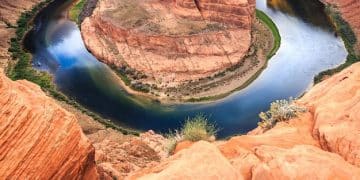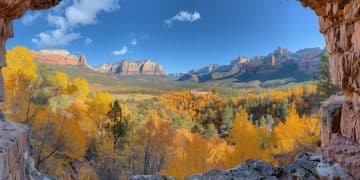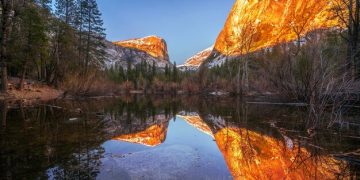Hiking US National Parks: Trails, Gear & Safety Guide
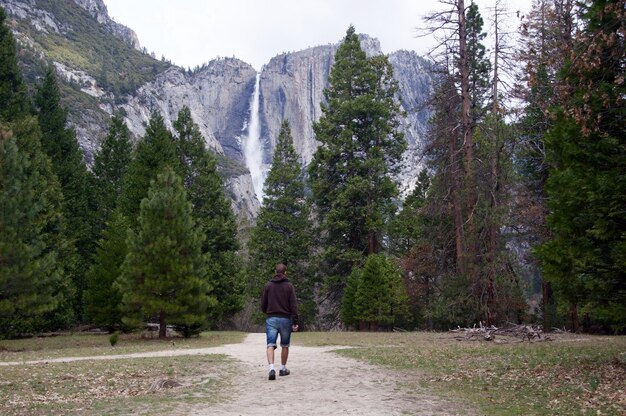
The Ultimate Guide to Hiking in US National Parks: Trails, Gear, and Safety Tips offers detailed insights into planning unforgettable hiking adventures, from selecting the best trails and essential gear to mastering safety measures, ensuring a rewarding and secure experience in America’s stunning natural landscapes.
Embarking on a hike in a US National Park is an unforgettable experience. This **Ultimate Guide to Hiking in US National Parks: Trails, Gear, and Safety Tips** will equip you with everything you need for a safe and rewarding adventure.
Choosing the Right National Park for Your Hike
The US boasts a plethora of National Parks, each offering unique landscapes and hiking experiences. Selecting the right park depends on your experience level, desired scenery, and time of year.
Consider Your Hiking Experience
Are you a beginner, intermediate, or advanced hiker? Some parks offer well-maintained, easy trails, while others challenge even the most seasoned adventurers.
Research the Scenery
Do you dream of hiking through towering forests, across vast deserts, or along rugged coastlines? Each park offers distinct natural beauty.
Here’s a quick overview of some popular hiking destinations:
- Yosemite National Park, California: Known for its iconic granite cliffs, giant sequoia trees, and stunning waterfalls.
- Zion National Park, Utah: Famous for its narrow slot canyons, challenging hikes, and breathtaking views.
- Acadia National Park, Maine: Offers a mix of coastal scenery, rocky shores, and forested trails.
- Rocky Mountain National Park, Colorado: Boasts towering peaks, alpine lakes, and abundant wildlife.
Ultimately, choosing the right park is about aligning your interests and abilities with the park’s unique offerings. Research is key to a successful and enjoyable hiking experience.
Essential Hiking Gear for National Parks
Having the right gear is crucial for a safe and comfortable hiking experience. This section outlines the essential items to pack for your adventure.
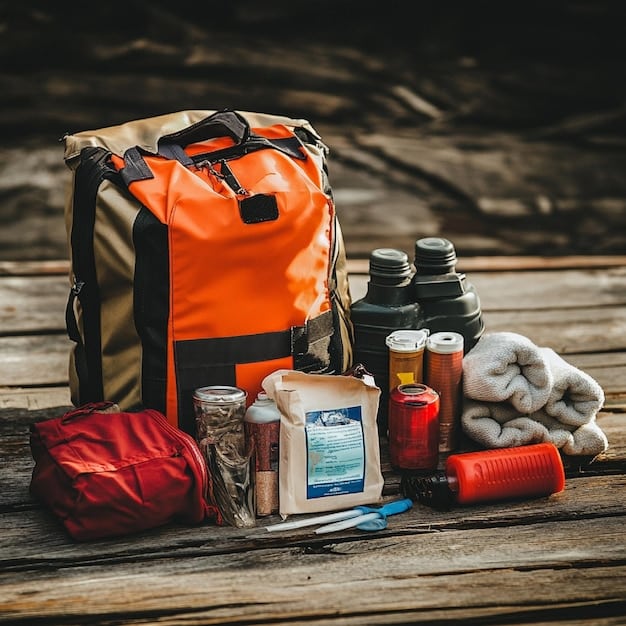
The Hiking Backpack
Choose a backpack that fits your torso length and the amount of gear you plan to carry. Consider a backpack with a hydration reservoir for easy access to water.
Footwear
Invest in hiking boots or trail shoes that provide good ankle support and traction. Break them in before your hike to avoid blisters.
Navigation Tools
Even on well-marked trails, carry a map and compass and know how to use them. A GPS device or smartphone with a hiking app can also be helpful, but don’t rely solely on electronic devices.
Don’t forget these important items:
- Water: Carry enough water to stay hydrated throughout your hike.
- Food: Pack high-energy snacks like trail mix, energy bars, and dried fruit.
- First-aid kit: Include essentials like bandages, antiseptic wipes, pain relievers, and blister treatment.
- Sun protection: Wear sunscreen, a hat, and sunglasses to protect yourself from the sun.
Proper gear preparation not only enhances comfort but also significantly contributes to overall safety and enjoyment on your hiking journey.
Safety Tips for a Successful Hike
Prioritizing safety is paramount when hiking in National Parks. Familiarize yourself with potential hazards and take necessary precautions.
Check the Weather Forecast
Weather conditions can change rapidly in mountainous areas. Be prepared for unexpected rain, wind, or temperature drops.
Tell Someone Your Plans
Let a friend or family member know your hiking route and expected return time. This information can be crucial in case of an emergency.
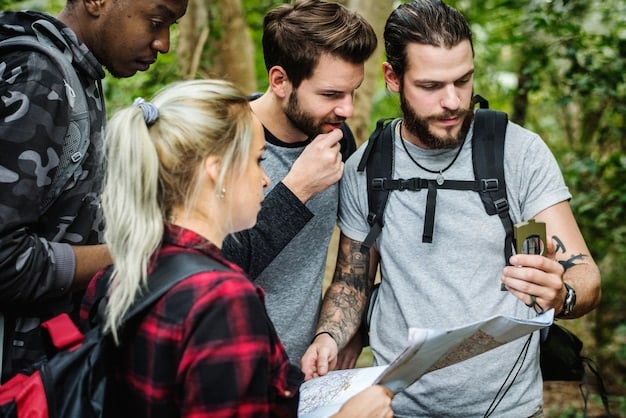
Stay on Marked Trails
Wandering off-trail can lead to disorientation, injury, and damage to delicate ecosystems. Stick to designated trails and avoid shortcuts.
Keep these safety tips in mind:
- Wildlife awareness: Be aware of local wildlife and take precautions to avoid encounters.
- Proper hydration: Drink plenty of water throughout your hike to prevent dehydration.
- Pace yourself: Avoid overexertion and take breaks as needed.
- Emergency preparedness: Carry a whistle, flashlight, and extra layers of clothing in case of an emergency.
By adhering to these safety tips, hikers can minimize risks and maximize their enjoyment of the natural wonders within US National Parks.
Navigating Trail Difficulties and Ratings
Understanding trail ratings is essential for selecting hikes that match your skill level and physical condition. Most National Parks use a standardized system to classify trails based on difficulty.
Understanding Trail Ratings
Trail ratings typically range from easy to strenuous, with each level indicating the trail’s length, elevation gain, and technical challenges.
Easy Trails
These trails are generally flat, well-maintained, and suitable for beginners and families with young children.
Moderate Trails
Moderate trails involve some elevation gain and may have uneven terrain. They are suitable for hikers with some experience and a reasonable level of fitness.
Things to consider when choosing trails:
- Elevation Gain: Understand how altitude affects your body and adjust your pace accordingly.
- Terrain: Evaluate the type of terrain you’ll encounter, such as rocky paths, stream crossings, or steep inclines.
- Distance: Choose a trail length that aligns with your fitness level and available time.
- Time of year: Assess how seasonal conditions like snow, ice, or extreme heat may impact trail difficulty.
By carefully assessing trail ratings and considering personal fitness levels, hikers can make well-informed decisions and enjoy a safe and satisfying hiking experience.
Leave No Trace: Hiking Ethics
Adhering to the Leave No Trace principles is crucial for preserving the natural beauty of National Parks for future generations. These ethics promote responsible outdoor recreation.
Plan Ahead and Prepare
Research trail conditions, weather forecasts, and park regulations before your hike. Pack appropriately and bring all necessary supplies.
Travel and Camp on Durable Surfaces
Stay on designated trails and campsites to avoid damaging vegetation and soil.
Dispose of Waste Properly
Pack out everything you pack in, including food wrappers, empty containers, and trash. Dispose of human waste responsibly by using designated toilets or burying it in a cathole.
Embracing these guidelines fosters a collective responsibility to ensure that hiking in US National Parks remains a sustainable and enjoyable activity for all.
- Minimize Campfire Impacts: Use established fire rings and keep fires small.
- Respect Wildlife: Observe wildlife from a distance and never feed or approach animals.
- Be Considerate of Other Visitors: Keep noise levels down and yield to other hikers on the trail.
By embracing these ethical guidelines, outdoor enthusiasts contribute to the preservation of the natural wonders found within the US National Parks system.
Capturing Memories: Photography Tips on the Trail
Hiking in National Parks presents incredible opportunities for photography. Here are some tips for capturing stunning images of landscapes and wildlife.
Golden Hour Magic
The hour after sunrise and the hour before sunset offer soft, warm light that can dramatically enhance your photos.
Composition Techniques
Use the rule of thirds, leading lines, and framing to create visually appealing compositions.
Wildlife Photography
Use a telephoto lens, be patient, and respect animals’ space and safety.
Here are some more recommendations for taking pictures while hiking:
- Use a Polarizing Filter: Reduce glare and enhance colors in your landscape photos.
- Shoot in RAW Format: Capture more detail and flexibility for post-processing.
- Protect Your Gear: Keep your camera and lenses safe from dust, rain, and accidental drops.
By mastering these techniques, hikers can capture remarkable photographs that immortalize their experiences within the breathtaking landscapes of US National Parks.
| Key Point | Brief Description |
|---|---|
| ⛰️ Trail Selection | Choose trails matching your skill level and physical condition. |
| 🎒 Essential Gear | Pack essentials: backpack, suitable footwear, navigation tools, water, snacks. |
| ⚠️ Safety Measures | Check weather, share plans, stay on trails, and be wildlife aware. |
| 🌿 Leave No Trace | Follow principles to preserve natural beauty for future visits. |
Frequently Asked Questions (FAQs)
▼
The best time to hike varies greatly depending on the specific park and your desired conditions. Spring and fall generally offer milder temperatures and fewer crowds, while summer provides longer daylight hours. However, be prepared for potential heat and thunderstorms during the summer months.
▼
Ascend gradually when hiking at high altitudes, allowing your body time to acclimatize. Drink plenty of water, avoid alcohol and caffeine, and eat a diet rich in carbohydrates. If you experience symptoms of altitude sickness, descend to a lower elevation immediately.
▼
Some National Parks require permits or reservations for certain trails, especially during peak season. Check the park’s website for specific requirements and make reservations well in advance to secure your spot.
▼
If you encounter a bear, remain calm and avoid direct eye contact. Make yourself appear large by raising your arms and speak in a loud, assertive voice. Slowly back away while keeping an eye on the bear. Never run or approach the bear.
▼
Follow the Leave No Trace principles by staying on marked trails, packing out all trash, minimizing campfire impacts, respecting wildlife, and being considerate of other visitors. By practicing responsible outdoor ethics, you contribute to the preservation of these natural environments.
Conclusion
Hiking in US National Parks offers unparalleled opportunities for adventure and exploration. By following these guidelines on trail selection, essential gear, safety precautions, and ethical considerations, you can ensure a safe, rewarding, and memorable hiking experience. So pack your bags, lace up your boots, and get ready to discover the natural wonders that await you in America’s stunning National Parks.
